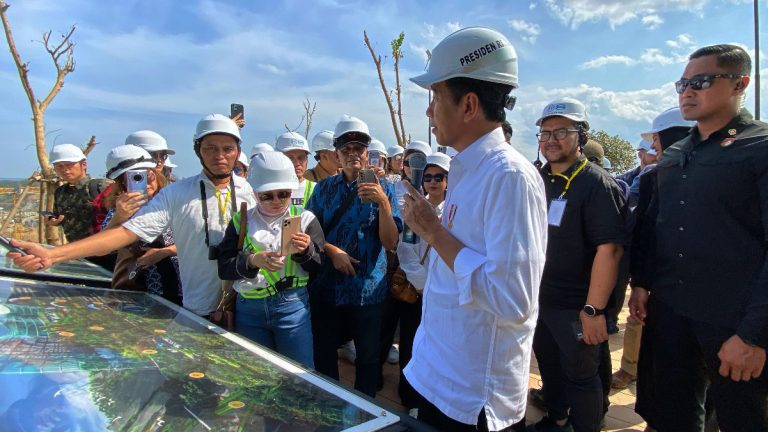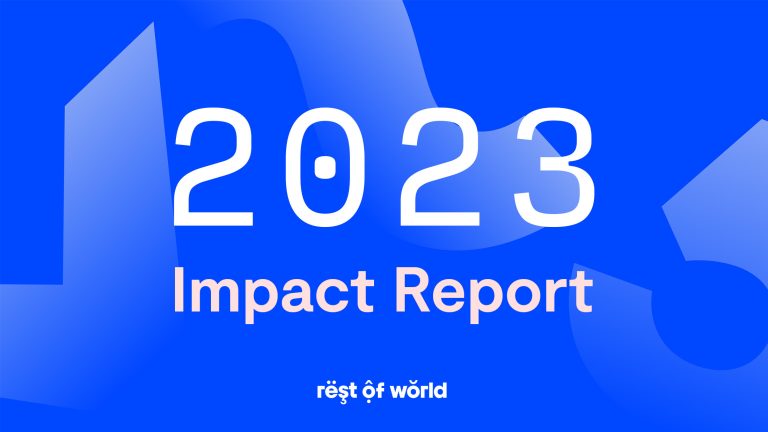Nubank is big — really big. With a valuation of $10 billion and more than 26 million users spread across Brazil, Argentina, and Mexico, the Brazilian startup is the largest digital bank in the world. David Vélez, Nubank’s effervescent CEO, is the face of Latin American fintech, a catchall term for technology companies that disrupt aspects of the financial world.
From the beginning, it has been a different kind of bank. While others charge fees for a banking account or credit card, Nubank eliminates them altogether. Its operating costs are less than those of Brazil’s oligarchic big five banks: Itaú, Santander, Bradesco, Banco do Brasil, and Caixa Econômica Federal. All of Nubank’s software development is done in-house. Users can open accounts, get credit lines, and pay bills on their smartphones, without setting foot in a bank branch or signing physical paperwork.
Nubank chose to make its debit and credit cards purple because it wants to be “the most anti-bank possible,” Vélez told Rest of World. “Some people absolutely hated it … some people absolutely loved it, but nobody ignored it.”
Vélez started Nubank in 2013. Its first office was a house he rented in São Paulo with cofounders Edward Wible and Cristina Junqueira. Despite not having any physical branches or ATMs, Nubank raised $820 million across seven funding rounds; among its initial investors were the Chinese tech giant Tencent and Vélez’s former employer Sequoia Capital. In early September, Nubank announced its acquisition of Easynvest, Brazil’s largest independent broker. The move has solidified its position as a digital alternative to Latin America’s full-service financial institutions.
And while Nubank has grown, its model is untested. The company collects a massive amount of information on its customers: 10,000 data points on each person. In the hands of a different boss, that data could be used for nefarious purposes.
Vélez, usually seen sporting a crisp button-down around Nubank’s ultramodern headquarters in São Paulo, is an optimist at heart. He comes from a family of small-business owners in Colombia. His first job, at age three, was sorting buttons at his uncle’s jean factory. He has had an eye for business since he was a kid; Vélez financed part of his undergraduate tuition at Stanford with a cow he bought at age 12 with money he saved from birthdays and summer jobs. That first cow became six cows, which, later, he sold.
After making the rounds of investment banks in New York, Vélez returned to Brazil in 2011 as a partner at Sequoia Capital. But two years in, he and his colleagues at Sequoia decided that the tech space in Latin America was not developed enough to invest in. They closed their Brazilian operations.
Where Vélez saw underdevelopment for Sequoia, he saw opportunity as an entrepreneur. He quit his job and started his own company. “I didn’t think twice,” he told Rest of World. “It felt liberating.”
A father of three kids under three, Vélez says he makes up bedtime stories for them each night. He also trains for marathons (he competed in the Buenos Aires Marathon in 2019). While he runs, he thinks.
Vélez spoke with Rest of World last month via Zoom. The conversation has been edited for length and clarity.
Sequoia pulled back its presence in South America just as you departed the firm. How did your team reach that decision?
We had spent two years meeting with entrepreneurs, and they were not exciting. First, there were not that many startups. Second, the few that existed were pursuing businesses that were directly copying the U.S., and they didn’t make sense for Latin America. They were not solving the real issues.
One meeting decided it: Sequoia met with a startup that brought up the fact that each year, 42 computer science engineers graduate from the University of São Paulo. You cannot build a tech ecosystem with so little talent. Engineers are the raw materials needed to create that ecosystem, and without them, it would be very hard to see a vibrant and large tech scene.
That was the moment where we all concluded that there was nothing to be done in Latin America. It was a sad moment, but it gave me the opportunity to pursue what I really wanted to do.
Given the constraints in Latin America, what made you think you could pull off a venture like Nubank there?
The bottom line on computer engineers meant that there was a bottleneck for creating an industry, but not a bottleneck for creating a company. Fundamentally, the path for Nubank was, Let’s do something that actually makes sense for Latin America. Let’s tackle a real problem.
We don’t see ourselves as a bank. We’re a tech company that happens to be in financial services.

Why focus on banking?
When I first lived in Brazil, I went through a banking branch in São Paulo and spent two hours trying to open a bank account. I never left a meeting or an interaction as frustrated as I was after those two hours. It took me five more months to open an account.
Five of the top 10 Brazilian companies are banks. The biggest companies in Mexico and Colombia are banks: big oligopolies that haven’t had competition for decades. Nobody dares compete with them because they are often controlled by the biggest or best-connected wealthy families. And this is a very regulated industry. You need licenses. You need a central bank. You need capital.
There were a ton of reasons why it was too hard. And that’s precisely why I got excited.
I didn’t want to start a company and sell it in three years. I asked myself, What is the single hardest industry to tackle in Latin America? And the answer was obvious: banking.
At the end of 2012, I talked to 30 industry experts in Brazil about using a smartphone to build a new bank. They all told me I was crazy, that this was impossible — that because I wasn’t Brazilian, I had no idea what I was talking about. The big banks will kill you. The regulators will kill you. Customers will never trust a new brand. Customers will never do this online. They gave 100 arguments for why this was a dumb idea.
Where did you look for inspiration?
When we started in 2013, there wasn’t really fintech — the word didn’t exist. There was no concept of digital banks. We saw that banks were underestimating their customers and treating them badly. Couldn’t it be done better?
We looked at Capital One. The banking system in the U.S. in the ’90s was underdeveloped and commoditized. Every consumer was paying 19.8% APR on their credit card, regardless of their credit score. Capital One added a lot of data, marketing, and analytics to segment the market and build a differentiated product.
I found out about Tinkoff in Russia. They started their company post-internet, pre-mobile. Capital One sent envelopes to people’s houses. Tinkoff used the internet as its main channel for acquisition and communication. It seemed like a business that made a lot of sense for Latin America, where interest rates were up to 10 times higher for credit cards.
How do you solve the problem of hiring engineers, given the shortage in South America?
There is no silver bullet. We hire the best engineers, and we have people of more than 40 different nationalities at Nubank. We also train our employees who were in other positions to code. Our first controller is now an engineer. We’ve also brainstormed the idea of starting a university or online schools.
Nubank reported a $17 million loss from January to June 2020. Your CFO Marcelo Kopel noted that this loss “is a decision, and therefore expected as part of the growth strategy at the moment.” Can you elaborate on this statement? Is profitability the only marker of success for a bank like yours?
Profitability is not a marker of success. Given the phase that we’re in as a company, we are prioritizing growing our customer and product base. We’re investing for the long run. Being the largest digital bank in Latin America, if suddenly we stopped growing in order to start generating profit, I think my investors would fire me immediately for making such a bad strategic move.
If we wanted to be profitable tomorrow, we would just grow a little bit less, and then we would be very, very profitable. If you look at our cash-flow statement, we generated cash in 2018. I would venture to say we are the only unicorn in the world that generated cash in year three. We are happy to continue investing for growth, but not so much that it becomes like burning cash. A $17 million loss for six months is actually not that much.
When do you think you’ll change that trajectory?
It will happen naturally, when our growth becomes so large, and our ability to generate revenues becomes so large, that profitability happens as a default — as an outcome, not as a goal. That could occur at any time. It really depends on us, especially since we’ve been launching new markets and new products. It could happen over the next one to three years.
Eighty percent of your new customers come from referrals, which you analyze closely. You also consider data, like the location and time of application, time spent reading the contract, and the things that customers purchase on their first few days with the card. How does your algorithm do the work of a traditional bank employee?
The advantage of underwriting fully digitally is that we have access to much more data than a physical employee would. At a branch, the bank ends up using maybe 10 of the hundreds of fields that you fill in on paper when you apply for an account. It’s a lot of customer friction for a little result.
In the digital world, instead of using hundreds of variables, we are able to use 10,000.
The referral gives us a lot of information. Customers who are responsible with their credit tend to refer people who also tend to be responsible with their credit. The opposite is also true. Fraudsters tend to invite other fraudsters. It goes both ways.
It’s like a tree with a lot of leaves. The leaves that are strong — you let them grow faster. The ones that are not, you cut them quickly so that they don’t damage the overall portfolio, the overall shape of the tree that you’re trying to grow.

How do you approach income inequality in Latin America in the context of your business?
Most banks think that lower-income people are higher risk. That’s not true. We’ve seen higher-income rich people who are way higher risk than lower-income people. The key thing is giving them the right line — don’t give somebody low-income a $10,000 line the first week. Just be responsible.
For a lot of our customers, we get them started with a $10 credit limit. Many of them are very responsible and pay on time. Thirty days later, that $10 limit goes to $100. If they are responsible and pay on time, the limit goes to $1,000, and they start building a good credit history and getting lower interest rates.
The other banks will tell them either, No, go away, or, Fine, but we’ll charge you 30% a month because you are low income, and there is no credit data in the system.
Unlike a lot of banks, we don’t segment based on income. We take income into account when we define that first credit line, but we don’t use it when we evaluate a new customer.
You have a trove of data that has never been collected before. Would you ever sell that data for a profit?
We are not selling data to anybody. We mean this. We have very clear privacy guidelines on how we use the data of our customers. Being a consumer-centric company, we feel that is a huge responsibility.
What does access to a financial institution mean for Brazilians, especially those who are banking for the first time with Nubank? How can a bank change someone’s life?
We calculated that we’ve saved more than $2 billion in fees. If Nubank wasn’t around, those $2 billion would be fattening the pockets of the five big banks, which own 90% of the market. Because of us, those $2 billion are somewhere in the economy, in the pockets of our customers. They are able to invest that money in education and health care — in areas where it can have a far greater impact.
Big banks thrive on the complexity of the system because it’s a way to create a relationship where consumers are hostages. They charge you two reais for an SMS notice, five reais for this, 100 reais for that.
Financial services are complex because the banks want to keep it that way. That means powerful and profitable banks on one end and unempowered consumers on the other. Our core purpose is to break complexity and empower people.



